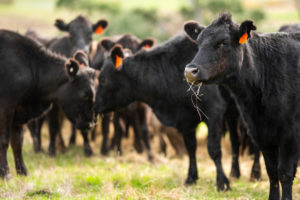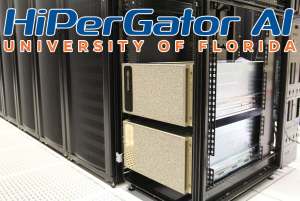
UF’s AI Supercomputer Works on Improving Cattle Yields

The average American consumes over 58 pounds of beef and 141 pounds of milk per year, but cattle farming is a deeply resource-intensive process with significant impacts on land use and carbon emissions – so any gains in efficiency are highly prized. Now, researchers at the University of Florida (UF) have used the university’s powerful new HiPerGator AI supercomputer to help ranchers identify the highest-yield livestock.
This June, UF made waves when HiPerGator AI, which delivers 17.2 Linpack petaflops, debuted on the Top500 list as the world’s third most powerful publicly ranked supercomputer at an educational institution and debuted on the Green500 list as the world’s second most efficient publicly ranked supercomputer. So when researchers from UF’s Institute of Food and Agricultural Sciences (IFAS) set out to improve cattle yields in a smarter way, they turned to supercomputer-powered AI.
“AI has rapidly emerged as a powerful approach in animal genomics and holds great promise to integrate big data from multiple biological layers, leading to accurate prediction of future traits – for example, meat yield,” said Raluca Mateescu, a professor of animal science at UF. “My research group is investigating the use of AI methods to develop approaches to accurately predict the value of certain genes. Ultimately, we plan to provide more effective strategies to improve animal productivity.”
To do this, Mateescu and Fernanda Rezenda (an assistant professor of statistical genetics and genomics at UF) are using genetic data from a thousand beef cattle, yielding information on 770,000 genetic markers from each animal. They then plan to feed this data into HiPerGator to identify which markers are predictive of higher yield. “We know some of the specific genes for milk and meat production,” Mateescu said. “But we’re looking into a bit of a black box. AI will help us clear up the mystery faster and more accurately.”
Improvements along these lines hold immense promise for productivity: in 1944, the U.S. had over 25 million head of cattle; but as of 2017, with just nine million, the U.S. actually produces more milk. By quickly identifying the traits of the most productive cattle, the researchers hope that they can accelerate this process and breed for productivity in a much more efficient manner.
“Given the complex genetic architecture, it is challenging for researchers to identify how these thousands of genetic markers and thousands of genes combine to produce the traits we see,” Mateescu said. “AI can help researchers achieve that goal. We are just starting to use AI to address these problems.”




























